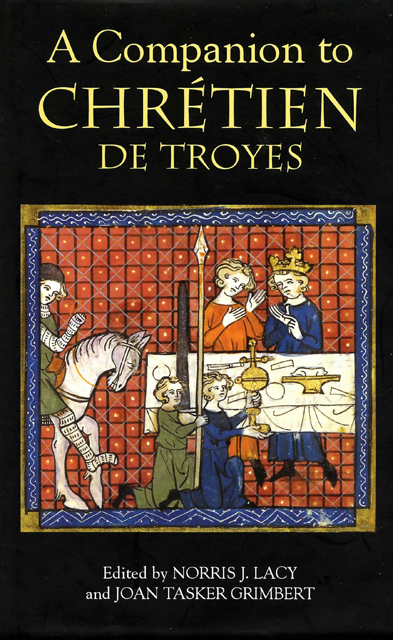12 - Le Chevalier au Lion: Yvain Lionheart
Published online by Cambridge University Press: 23 March 2023
Summary
As King Arthur celebrates Pentecost, one of his knights, Yvain, overhears a cousin, Calogrenant, narrating an adventure in which he had lost face. Yvain at once vows to avenge him and precipitately leaves court for the scene of the adventure, a magic fountain in the forest of Brocéliande. He defeats the defender of the fountain, Esclados le Ros, and pursues the mortally wounded knight to his castle, where he promptly falls in love with the knight's widow, Laudine, whom he persuades to marry him through the ingenious help of her quick-witted handmaiden Lunete. No sooner has the wedding taken place than Yvain is lured away to the tournaments by his best friend Gauvain and, heedless of the period of leave which his new wife has generously granted him, fails to return to her on time and is repudiated by her. Ashort period of madness follows, with the hero retreating to the forest as a sort of wild man. Rescued by the Lady of Noroison and three maidens, he embarks on a series of adventures, six in all, before being reunited with his lady through a stratagem devised by Lunete in the manner of the ruse she had employed to arrange the marriage in the first place. It is in the course of his adventures that Yvain rescues a lion fromcombat with a dragon and unexpectedly becomes the beneficiary thereafter of its devoted service, so that when he has an incognito meeting with Laudine he identifies himself to her as The Knight of the Lion, a pseudonym which is instrumental in the stratagem which reunites them.
Most critical introductions to Yvain begin by praising the clarity of its structure and the harmoniousness of its general design. This is a first impression, but certainly strong enough to have led to its long being considered the perfect paradigm of medieval romance, a view reinforced by the number of close medieval translations or adaptations which were made of it, attesting to its popularity in Germany, Scandinavia, England and Wales, no less than in France, where the Lyonnais Pierre Sala rewrote it as late as 1522. These are painstaking formal imitations with many of the problematic features removed, or at least simplified, a fact which proves instructive in identifying such features and assessing their contribution to the success of Chrétien's composition, both in the Middle Ages and today.
- Type
- Chapter
- Information
- A Companion to Chrétien de Troyes , pp. 156 - 168Publisher: Boydell & BrewerPrint publication year: 2005
- 2
- Cited by



